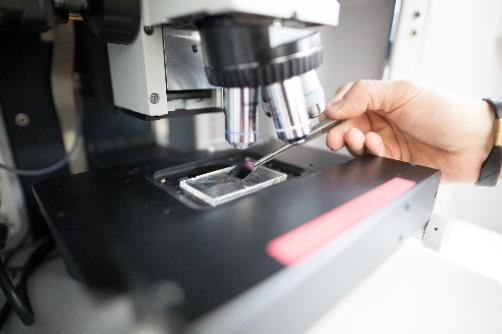Raman spectroscopy is a spectroscopic technique based on inelastic scattering of monochromatic light, usually from a laser source. In the spectrum of the light scattered, in addition to the incident frequency other frequencies are observed. The frequency differences to the incident light correspond to the characteristic of the material energies of different rotation, vibration processes. From the spectrum obtained, it is possible to draw conclusions about the investigated substance, similar to the spectrum obtained by infrared spectroscopy.
Application:
- Qualitative and quantitative analysis of liquids, gels and solids
- Automatic Raman mapping
- In situ measurements of various ionic liquids in inert atmospheres at temperature of 20-250°C
- In situ measurements up to 200°C using fiber optics
Specifications:
- Micro-Raman spectrometer LabRam ARAMIS-UV Vis (Horiba Yvon)
- Measuring range 400-1100 nm
- Raman microsphere BX 41 (True Confocal Aperture)
- Automatic Raman mapping
- Raman-microscopic measurements of the samples
- Laser: 472 nm, 532 nm, 632 nm
- Optical fiber for in situ Raman measurements: up to 200°C, Ø 15 mm, distance: 1 and 4 mm, 5 m long
- Lenses: 10x, 50x and 100x
Applications:
- Plastics, polymers and paints
- Salt residues of pickling
- Monomeric granules
- Solvents
- Galvanic baths (on organic additives)
- Ionic liquids
Requirements for solid samples:
- maximum size 8 x 8 cm
- minimum size 0.1 x 0.1 cm
- maximum height 2 cm
- no large bends
Requirements for liquid samples:
- not corrosive
- no high vapor pressures

Raman spectra of ionic liquids
(x)Pyr14Cl-(1-x)NbCl5 (x=0.85-0.20),
with various concentrations

Melted NbCl5 at 210°C in high temperature cell (20-250°C) for in situ Raman spectra measurements

